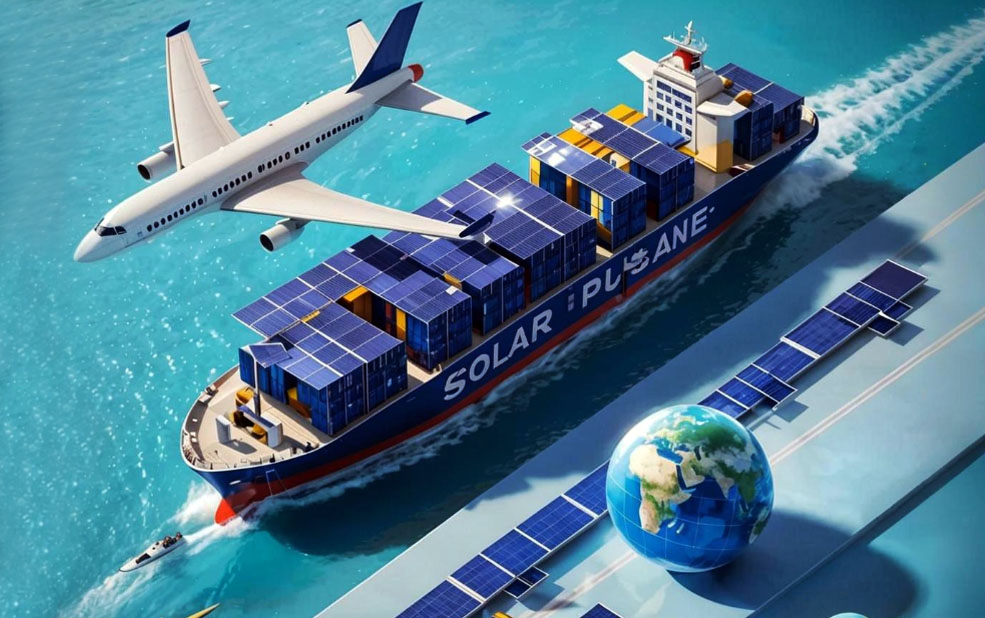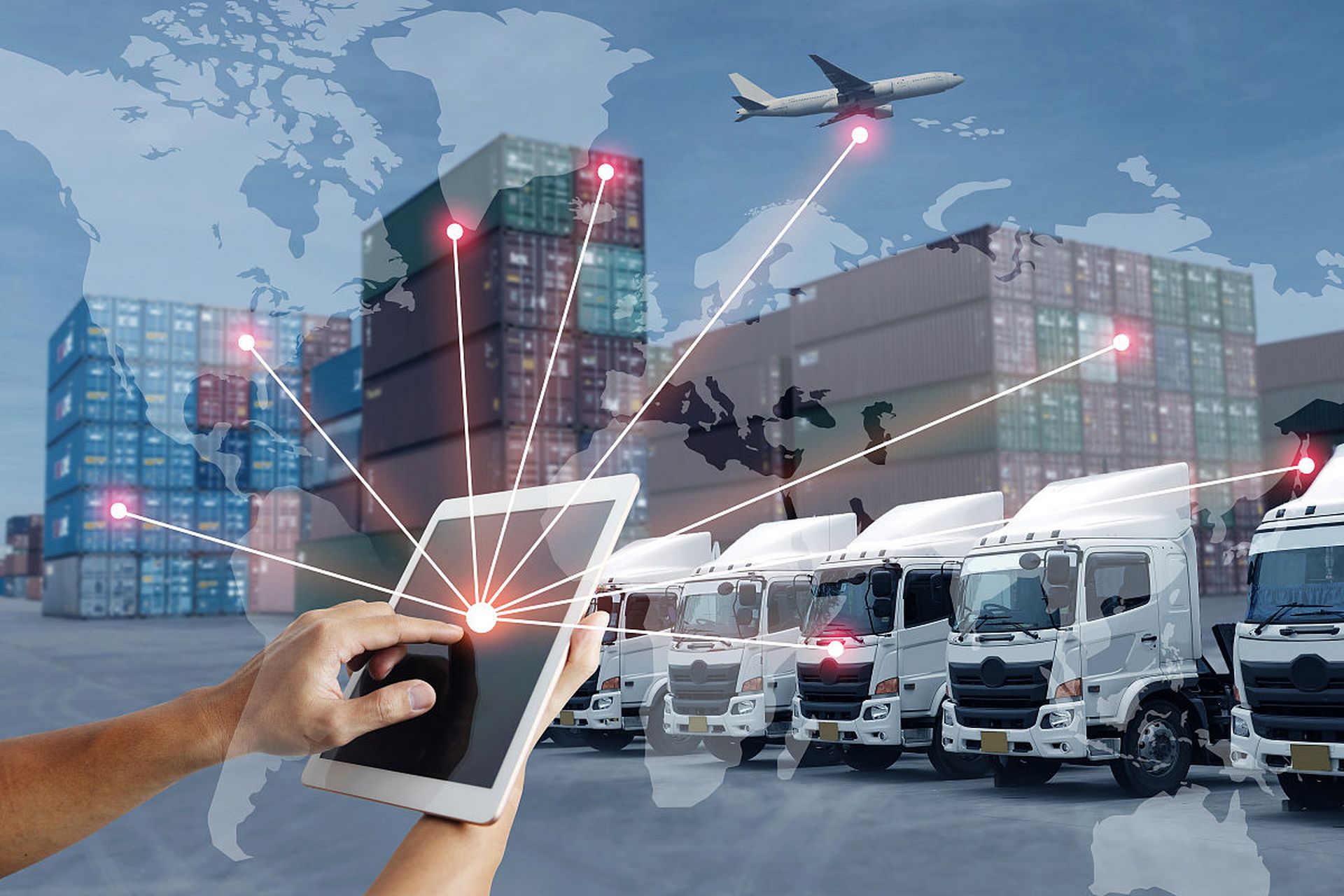How to Efficiently Transport Solar Panels from China
As the global green energy movement gains momentum, clean energy is becoming more and more cherished by folks everywhere. Solar panels, a key player in the clean energy scene, are seeing a surge in demand. Let's dive into the nitty-gritty of how to ship solar panels from China to the far corners of the world, ensuring both safety and efficiency.
How To Ship Cable Products From China
Overview of Solar Panels
The fundamental makeup of solar panels consists of key components like silicon wafers and battery cells, along with packaging materials. These panels are quite finicky when it comes to environmental conditions; temperature and humidity can significantly impact their quality and performance. They're a popular choice for installation on residential homes, commercial buildings, and various industrial settings.
Typically, solar panels are made up of numerous smaller battery units, and their surfaces are usually safeguarded by a layer of glass or transparent plastic film. This protective covering can be quite delicate, making the panels prone to damage from impacts or scratches. When it comes to shipping, maintaining a consistent temperature and humidity level in the surroundings is crucial to ensure that the solar panels remain intact and undamaged throughout the transport process.
How to Ship Solar Panels from China
Sea freight is the most common mode of transportation, with relatively low freight costs, but it takes a long time. The main service types are divided into FCL and LCL.
Full Container Load (FCL) shipping is a reliable method that guarantees the security and streamlined handling of cargo. Depending on the quantity of goods, you can opt for either a 20-foot or a 40-foot container, offering flexibility to match your shipment's volume. On the other hand, Less than Container Load (LCL) is ideal for small to medium-sized shipments. It allows for the consolidation of goods from various senders, which can lead to cost savings. However, it's important to be mindful of the compatibility of different goods being shipped together and to be cautious of the potential risks associated with loading and unloading.
Perhaps you need to read other information:Comprehensive Analysis: FCL vs LCL Shipping
Air Freight
Air freight is the fastest mode of transportation. It is suitable for urgent replenishment and high-value new products. Airport-to-airport service is convenient, but the freight is high. It is charged by weight and volume, and there are strict restrictions on packaging size and weight.
Packaging and Shipping Requirements for Solar panels
The packaging of solar panels is the key to ensuring the safety of the transportation process. Since the surface of the panels is fragile, the packaging must be able to effectively prevent external pressure and impact. Common packaging methods include:
- Wooden boxes or cartons: Use wooden boxes or thick cartons with strong pressure resistance for packaging, and reinforce the fillers inside to prevent the panels from being squeezed during transportation.
- Shockproof materials: Add shockproof materials such as foam plastics and bubble films to the packaging to reduce the risk of collision or vibration during transportation.
- Waterproof materials: Coat the surface of the panels with waterproof film or use waterproof packaging bags to ensure that moisture is prevented from intruding during transportation.
- Clear marking: The words “fragile items” or “moisture-proof” should be marked on the outside of the packaging to remind the transportation personnel to pay attention.
- Indicate the direction: Since solar panels have requirements for the transportation angle, the “this side up” mark should be clearly marked on the packaging.
Cost Structure of Shipping Solar Panels from China
Transportation costs are an aspect that companies need to focus on. The cost structure of transporting solar panels mainly includes:
- Freight: depends on the mode of transportation (sea, air) and the weight/volume of the goods.
- Fuel surcharge: As oil prices fluctuate, fuel surcharges will also affect the overall transportation cost.
- Insurance: Considering the fragility of solar panels, it is recommended to purchase transportation insurance.
- Port fees: At the port of departure or destination, port handling fees, warehousing fees, etc. may need to be paid.
- Customs clearance fees: including related fees for export declaration and import customs clearance.
- Other additional fees: such as bill of lading fees, warehousing fees, etc.
Shipping Time for Solar Panels from China
Solar panels are usually transported long distances by sea, which is the most common and economical mode of transportation. Shipping time is usually as follows:
- From China to Europe and USA: It takes about 25 to 40 days, depending on the distance between the port of departure and the port of destination.
- From China to the Middle East: For example, Dubai, Saudi Arabia, etc., the shipping time is usually 14 to 20 days.
For urgent orders or small batches, air transportation is a fast but costly option. Shipping time is usually between 3 and 7 days.
The specific time depends on multiple factors such as transportation mode, destination, production cycle, customs clearance, etc.
Learn about shipping from China to other countries:
- Shipping From China To USA | Transportation Through Various Channels
- Shipping from China to Oman| Price and Time
- Shipping from China to Tanzania | Air & Sea Freight Rates
- Shipping from China to Egypt | Air & Sea Freight Rates
- What Is The Shipping Duration From China To UAE?
How to Import Solar Panels from China
Importing solar panels from China is a multi-step process that requires detailed planning and preparation:
Understanding the needs
Clarify the type, specifications, quantity and quality requirements of the solar panels you need. You need to choose the right product based on your needs.
Choosing a supplier
Find a reliable solar panel supplier through online platforms (such as Alibaba, 1688, Made-in-China, etc.) to ensure that it has production or supply capabilities and a good reputation.
Confirming the order
After selecting the most suitable supplier, sign a formal purchase contract with it to confirm details such as price, delivery date, quality standards, etc.
Production and stocking
During the production process, you can communicate with the supplier regularly to confirm the production progress. If necessary, you can ask the factory to take photos or videos of the production process to ensure on-time delivery.
Transportation insurance and risk management
Transporting solar panels involves higher risks, especially during long-distance transportation, where the panels may face the risk of damage, loss or theft.
Arranging transportation and logistics
Choose the appropriate transportation method based on the type, specifications, and quantity of solar panels, and try to find local international freight forwarders in China to handle them. They are more familiar with the relevant transportation procedures and customs clearance work in the local area, which can save a lot of unnecessary trouble.
Choosing a freight forwarder
If you are not familiar with international logistics, you can hire an experienced freight forwarder to help arrange transportation, customs clearance and other related services. Freight forwarding companies will plan appropriate transportation plans based on factors such as the volume, weight, and destination of the product.
Customs clearance and document requirements
Prepare import customs clearance documents: When the goods arrive at the destination country, the importer needs to submit a series of documents to the customs for import customs clearance, including:
- Commercial invoice
- Packing list
- Transport documents (such as bill of lading)
- Certificate of origin
- Contract and payment voucher, etc.
Tariffs and import restrictions
Different countries and regions have different import tariffs, quotas, and restrictions on solar panels. When choosing a target market, it is very important to understand the local tariff policy. Common import restrictions include:
- Import taxes: Some countries impose tariffs on the import of solar panels, and the tariff rates vary from country to country.
- Anti-dumping duties: For example, the United States, the European Union, and other places have imposed anti-dumping duties on solar panels produced in China, increasing transportation costs.
- Environmental certification requirements: Some countries have environmental standards for solar panels and may require importers to provide relevant certifications.
By reading 'Understand China's tariffs and achieve efficient trade', you can have a clearer understanding of the relevant content.
Factors for Choosing A Freight Forwarder
It is crucial to choose a reliable freight forwarder. Here are the factors to consider when choosing a freight forwarder:
- Industry experience: Choose a freight forwarder with rich experience in transporting solar panels and can provide professional transportation solutions.
- Service quality: Evaluate the customer service, transportation timeliness and emergency handling capabilities provided by the freight forwarder.
- Transportation network: Choose a freight forwarder with a global transportation network to ensure the stability of transportation.
- Transparent fee structure: Make sure the freight forwarder provides a clear fee structure with no hidden fees.
Navigating the process of shipping solar panels from China is no simple task, it's a multifaceted journey with numerous stages and specifications to consider. Armed with the insights from this guide, businesses can navigate the complexities of international shipping with greater ease, ensuring their solar panel shipments reach their final destinations without a hitch.
 English
English 简体中文
简体中文 繁體中文
繁體中文 Afrikaans
Afrikaans አማርኛ
አማርኛ Español
Español العربية
العربية Français
Français Dansk
Dansk Български
Български Беларуская мова
Беларуская мова বাংলা
বাংলা Português
Português Русский
Русский Afsoomaali
Afsoomaali فارسی
فارسی Türkçe
Türkçe كوردی
كوردی Deutsch
Deutsch 日本語
日本語 ไทย
ไทย Tiếng Việt
Tiếng Việt Italiano
Italiano עִבְרִית
עִבְרִית 한국어
한국어 Română
Română Nederlands
Nederlands Bahasa Indonesia
Bahasa Indonesia Shona
Shona






